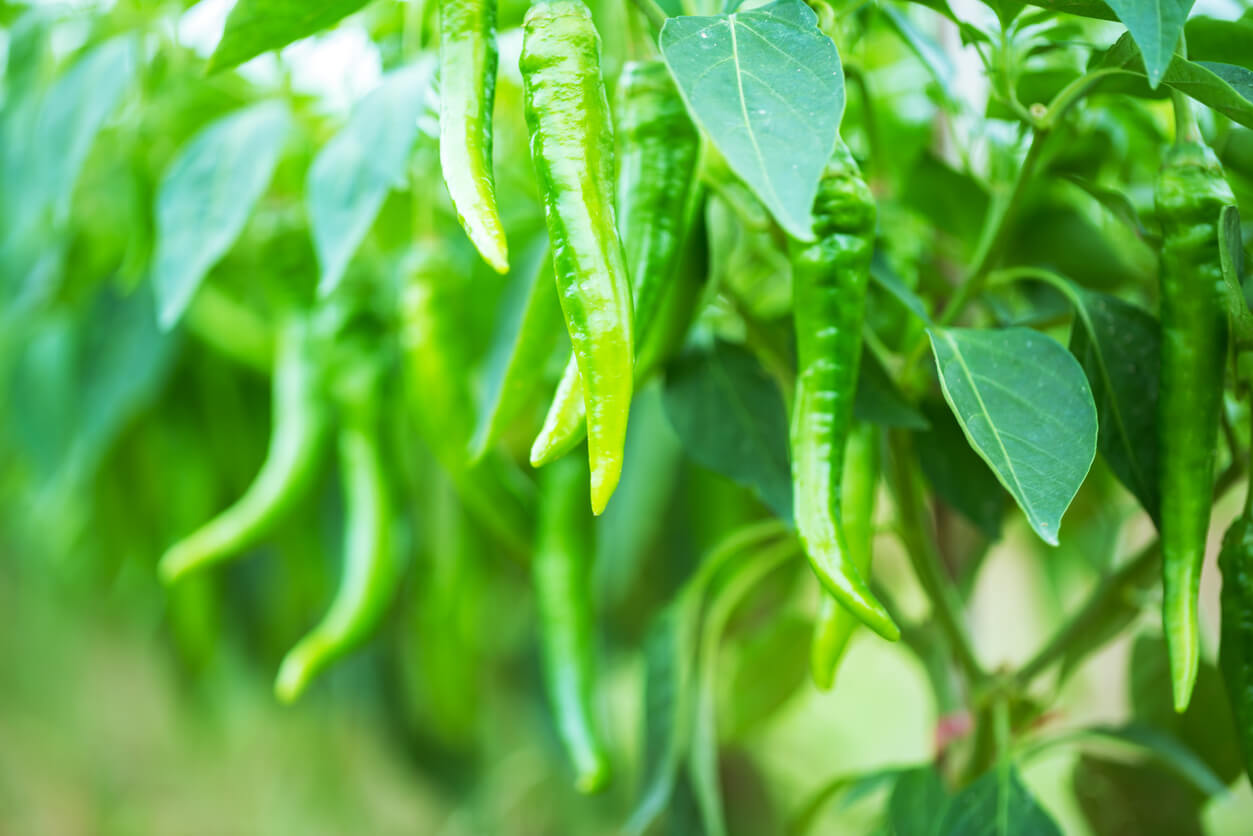
Green chile peppers growing in the sun
Hot peppers like a full day of sun—preferably at least six hours of direct sunlight. The soil should be well-drained and rich in organic matter. Sandy loam soil is best. Do your hot peppers a favor and be sure to mix in some aged compost before you plant them.
Your hot peppers don’t need a lot of fertilizer to get going, but a fish and kelp fertilizer can give them a lot of the nutritional boost they need to flourish.
In general, hot peppers prefer a soil pH of 6.5 to 7.0. One of your annual gardening tasks should be to get your soil tested. You’ll save yourself a lot of time and aggravation, and your plants will thank you by growing instead of languishing. Your local extension center will have information on how to get your soil analyzed. For a little bit of preparation work, you can get a lot of information about the composition of your soil.
Hot peppers are a warm-weather crop with a long growing season. If you live in an area with a less than ideal growing season length, you can order plants directly from nurseries that specialize in hot peppers. The plants will arrive just in time for you to acclimate them and plant them out.
Have you had success growing hot peppers where you live? Have you had your soil tested or do you do it yourself? Please tell us your tips and tricks for growing great hot peppers!


 Previous
Previous


I grew Jalapenos and hot cherry peppers…bumper crop but the Jalapenos were not hot, they were delicious cut up but NOT HOT. Anyone know why?